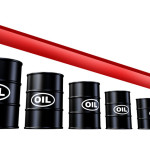- Stay Connected
Oil price falls below $28 a barrel as Iran sanctions lifted

(EBC, January 18, 2016)- The oil price has fallen below $28 a barrel amid fears the lifting of Western sanctions on Iran could worsen the existing oversupply problem.
Brent crude, used as an international benchmark, fell as low as $27.67 a barrel, its lowest since 2003, before recovering slightly to trade at $29.25.
The price of US crude also fell below $29 a barrel to $28.86.
The lifting of the Iran sanctions mean half a million barrels more oil per day could be produced, say analysts.
“The drop was due to the Western sanctions on Iran being lifted. This means we will be seeing a bigger oil glut with Iranian crude exports coming back to the market,” said Phillip Futures analyst Daniel Ang.
The decision to lift the sanctions against Iran came on Sunday after the international nuclear watchdog, the IAEA, said Iran had complied with a deal designed to prevent it developing nuclear weapons.
Iran has the fourth largest proven oil reserves in the world, according to the US Energy Information Agency and any additional oil would add to the one million barrels a day of over-supply that has led to a more than 70% collapse in oil prices since the middle of 2014.
Analysts said Iran already had quite a lot of oil ready to sell.
“Iran has quite a large storage of oil at the moment. They are in a position to sell that if they choose to do so and increase supply quite quickly,” said Ric Spooner, chief market analyst at CMC Markets.
The drop in the price of oil has been driven by oversupply, mainly due to US shale oil flooding the market.
At the same time, demand has fallen because of a slowdown in economic growth in China and Europe.
Historically, Opec has cut production to support prices. But led by Saudi Arabia, by far the group’s most powerful member, the group has resolutely refused to trim supply this time.
Analysts expect supply to continue to outstrip demand over the next two years, which would keep prices low.
HSBC chief executive Stuart Gulliver said that he expected the price of oil to settle at between $25 and $40 in one year’s time.
“Major producers are currently delivering 2-2.5 million barrels per day more than demand, so the question is how long they can continue to overproduce for at that level,” he said, speaking at the Asia Financial Forum in Hong Kong.
